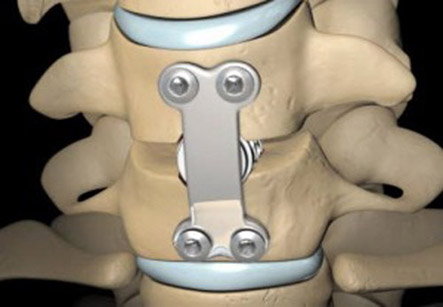Cervical Fusion Surgery
Introduction
Cervical fusion surgery means a spinal fusion surgery in the neck, or cervical, spine. The surgeon makes an incision in the back of the neck. The neck muscles are retracted aside which provides access to the spine. Often, cervical fusion surgery is performed along with a decompression surgery. Bone graft is placed, and screws or surgical wire may be used at the fusion level to provide stability. In general, cervical fusion surgery is performed less frequently than anterior cervical fusion.
Various disorders of cervical spine require surgery for relief of painful symptoms. One of the basic underlying factors associated with these disorders is the dehydration of the disks. As the age increases, the gelatin-like centers of the intervertebral disks begin to dry out and become flattened. This causes the vertebrae to lose height and its healthy resilience. With this degeneration, the vertebrae get closer together and cause nerve irritation. This can happen due to a ruptured or herniated disc, bone spurs, or stenosis.
Conditions Treated with Cervical Fusion Surgery:
Cervical fusion surgery may be performed for the treatment of spondylosis, spinal stenosis, nerve compression, or fracture and in patients with previous cervical spine surgery.
We have all the information you need about public and private clinics and hospitals that provide spinal surgery in Iran, Islamic Republic Of with the best quality and lowest possible prices

Before the Cervical Fusion Surgery:
1. A proper history, examination and few lab tests and scans are done to determine the general health.
2. An MRI is the procedure of choice for the diagnosis of spinal stenosis. The scans are very important for the surgery.
3. Patient should stop anti-inflammatory drugs like aspirin at least a week before surgery.
4. Medications being taken for other conditions like diabetes, heart disease, blood pressure should be continued with advice from the treating doctor.
5. History of smoking or alcohol drinking should be told to the surgeon. Smoking should be stopped if possible as it interferes with the wound healing.
6. Recent history of cough, cold, fever, viral infections, or other illnesses should be informed to the surgeon.
7. Patient is not allowed to eat or drink anything at least 8 to 12 hours before surgery except essential medicines with sips of water.
Procedure:
1. The patient checks into the hospital the morning of surgery. Prior to cervical fusion surgery, the patient is asked to sign consent for surgery, anesthesia, blood and blood products.
2. Patient is given general anesthesia and the surgeon makes an incision in the back part of the neck.
3. Fluoroscopic guidance (live X-ray) is used to determine the correct level to be operated.
4. Muscles in the neck are gently retracted to the side so that the spine can be seen.
5. After this, a bone graft is placed in the area to be fused. Often, screws or wires are used to help provide stability.
6. Cervical fusion surgery takes approximately 2-4 hours for completion.
Anterior Cervical Fusion:
Anterior refers to the front. In this procedure, the surgeon reaches the cervical spine through a small incision in the front of the neck, usually within a skin fold line under the chin. The neck muscles are retracted and the neurosurgeon uses an operating microscope to remove the affected intervertebral disk. This takes the pressure off the nerves or spinal cord. This is called as decompression. This removed material is then replaced with a bone graft that will fuse the vertebrae together over time.
After the Cervical Fusion Surgery:
1. Patient is monitored for changes in pulse, blood pressure and ECG in the recovery room for about 1 to 1½ hours.
2. After going to a hospital room, the patient is given pain reliever medications by intravenous route or by a pain-control pump. This pump controls the amount of medication that can be received.
3. The hospital stay is usually about 1-2 days.
4. A cervical collar or brace is prescribed to restrict bending of neck and promote healing of the fused area. It is essential to avoid turning the head and bending the neck excessively.
5. A set of exercises to be done at home will be provided along with the prescription of necessary medications.
6. Physical therapy is usually initiated after the first appointment with the doctor following surgery.
Recovery:
Recovery after cervical fusion surgery varies greatly from patient to patient. It is usually dependent on the extent of the surgery as well as the age and health of the patient. Time required for return to work also varies and is related to overall health and the type of work. The type of collar used may limit the ability to drive safely for a period of time.